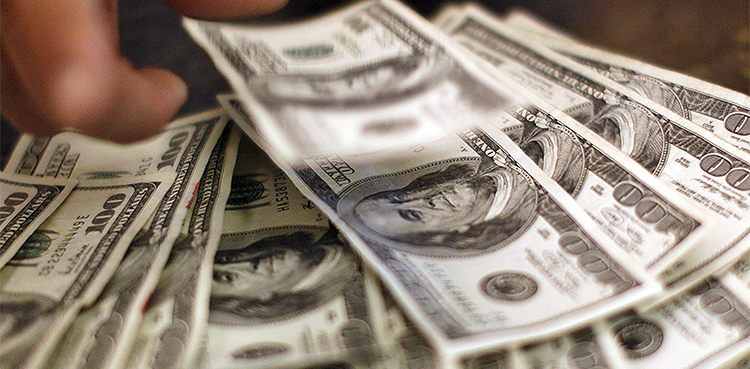NEW YORK/LONDON: The US Dollar firmed on Wednesday, hitting a new 10-week high, as investors priced out a hefty interest rate cut from the Federal Reserve at the next policy meeting and included a potential election victory by former President Donald Trump.
Sterling, meanwhile, tumbled to its lowest in two months after softer than expected British inflation data offered scope for the Bank of England to cut rates more forcefully, while the euro was at a 10-week low ahead of a European Central Bank meeting.
But with U.S. presidential elections a few weeks away, investors’ focus has shifted to the contest along with the Fed’s interest rate path.
Trump’s plan to implement tax cuts, looser financial regulations, and higher tariffs is viewed as positive for the dollar. Higher tariffs, for instance, would have negative implications for Asian currencies, notably the Chinese yuan, and would also mean increased volatility in financial markets, ultimately benefiting the dollar.
Vassili Serebriakov, FX strategist at UBS in New York, said a combination of Fed policy expectations and U.S. election prospects have provided a lift for the dollar.
“We have priced out a 50 basis-point (bp) cut. Fedspeak has also been consistent with a very gradual pace of rate cuts.” said Serebriakov.
“The proximity of the U.S. elections makes the market more hesitant to sell the dollar, especially as opinion polls have shifted a bit toward former President Trump. The market is also contemplating some of the potential tariff risks as well.”
In late morning trading, the dollar rose 0.2% to 103.44 , after hitting yet another 10-week high of 103.47.
The euro, the dollar index’s biggest component, fell 0.2% as well to $1.0876 , after earlier sliding to an 11-week low of $1.0871.
Investors will be closely watching the ECB meeting on Thursday, though if policy makers deliver the currently priced 25-bp rate cut and President Christine Lagarde refrains from giving too many clues about the further rate outlook, the market impact could be muted.
STERLING PRESSURE
The pound, meanwhile, was one of the biggest movers among major currencies, dropping 0.5% to $1.3008 . It dipped under the $1.30 level for the first time since Aug. 20, after data showing the rate of annual consumer price inflation dropped to 1.7% in September from 2.2% in August.
That was the lowest reading since April 2021, and under the 1.9% forecast by a Reuters poll of economists. It reinforced bets on a BoE interest rate cut next month and made a further cut in December more likely.
The euro was last 0.4% higher against the pound at 83.63 pence. .
Across the Atlantic, traders have priced in a 97% chance of a 25-bp cut when the Fed next decides policy on Nov. 7, with an 3% probability of a pause, according to LSEG’s estimates. A month ago, traders saw 50-50 odds of a super-sized 50-basis-point reduction.
Market pricing still strongly favours about 50 bps of easing this year, but comments from central bankers overnight leaned hawkish. The Atlanta Fed’s Raphael Bostic said he pencilled in just one 25 basis-point rate reduction for this year, while the San Francisco Fed’s Mary
Daly said “one or two” cuts in 2024 would be “reasonable”.
The dollar added 0.3% against the yen to 149.605 yen , not far from Monday’s high of 149.98 yen, the strongest since Aug. 1.
BOJ board member Seiji Adachi said on Wednesday the central bank must raise rates at a “very moderate” pace and avoid hiking prematurely, given uncertainties over the global economic outlook and domestic wage developments.
In other currencies, the Australian and New Zealand dollars sagged as scepticism widened over stimulus from top trading partner China.
The Aussie dropped to US$0.6663, the lowest since Sept. 12, and last traded at US$0.6664, down 0.6%. The New Zealand unit sank to UD$0.6041, a level last seen on Aug. 19, and was last down 0.3% at US$0.6062 .
On Saturday, China’s finance ministry said it would increase borrowing, without saying when or by how much. China will hold a press conference on Thursday to discuss promoting the “steady and healthy” development of the property sector.
Copyright for syndicated content belongs to the linked Source link









